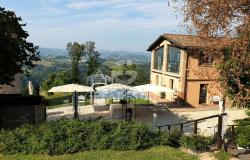Fellini fans, take note: the world’s largest museum devoted to the life and work of the acclaimed Italian director opened in his hometown of Rimini last week.
The Federico Fellini International Museum is spread out over three venues: the Renaissance Sismondo Castle, the upper floors of the city’s art-nouveau Cinema Fulgor and the ‘Square of Dreams,’ an outdoor space completely pedestrianized covering about 400 square meters between the castle and the movie theater, with video installations and interactive experiences, under the theme “everything can be imagined.”
A number of Fellini movie sets, such as the famous La Dolce Vita, are reproduced inside Sismondo Castle, one of Rimini’s most important monuments, built by Sigismondo Pandolfo Malatesta, lord of Rimini, in the 15th century. Original scripts, costumes, letters, documents and videos will be displayed throughout the castle for visitors to immerse themselves in Fellini’s work.
Celebrated in Amarcord, Cinema Fulgor - where the filmmaker saw his first movie and where he nurtured his love for cinema - houses exhibitions that focus on the relationship between Fellini and Rimini, the Romagna seaside town where he was born and grew up that was the inspiration for many of his masterpieces; and on the director’s emergence on the international film scene. On the second floor, a ‘cinemino' (small movie theater) will play Fellini’s movies throughout the day.
Much of Fellini’s cinematic art was inspired by his childhood memories of Rimini, a lively town on the Adriatic coast, the heart of the Riviera Romagnola, with 15 kilometers of well-equipped beach resorts and a legendary nightlife.
Fellini was nominated for 12 Academy Awards, winning four in the category of Best Foreign Language Film (La Strada, Nights of Cabiria, 8 1/2, Amarcord), the most for any director in the history of the Academy. At the 65th Annual Academy Awards in Los Angeles, he also received an honorary award for Lifetime Achievement. Fellini died in 1993.
The Fellini Museum opens as part of the celebrations for the centennial of the director’s birth (January 1920), which had to be downsized last year due to Covid-19 restrictions.



